#1660s England
Text

Brown Silk Cloak, 1660-1679, British.
Victoria and Albert Museum.
#cloak#womenswear#extant garments#silk#17th century#1660s#1670s#1660s cloak#1670s cloak#brown#v&a museum#British#Britain#1660s Britain#1670s Britain#1660s England#1670s England
27 notes
·
View notes
Text
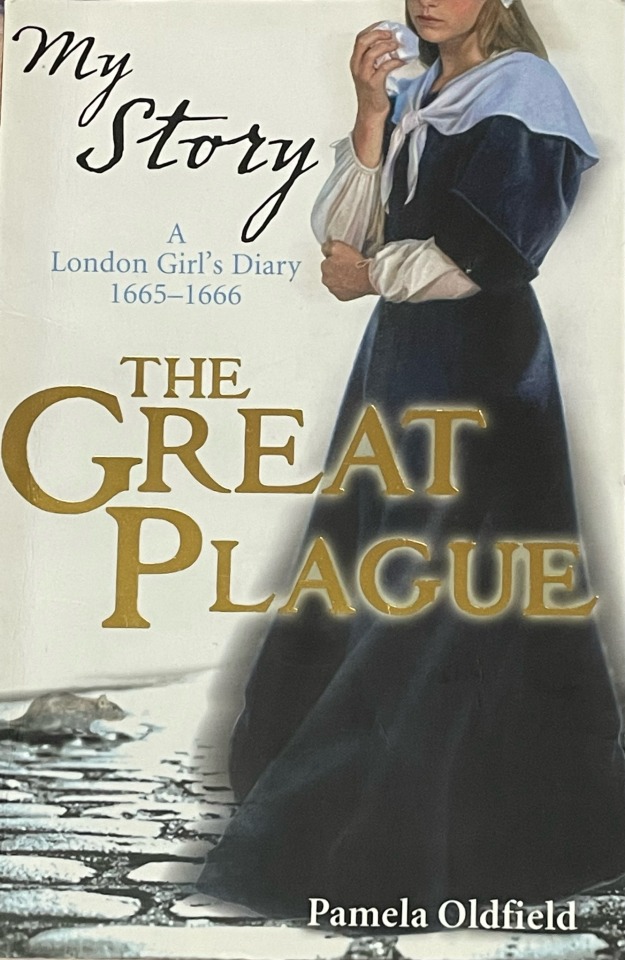
The Great Plague, by Pamela Oldfield. I had high hopes for this book and for the most part was not disappointed. Alice would not have known how the plague was spread, but her guilt was unconvincing because by her own logic, she would have been much more likely to catch the disease.
The Great Fire was tacked on to the end of the story but there is a gap of a year between the two events with very little to tie them together. It would have been better if Alice had written entries consistently during that time, instead of just once or twice.
Goodreads star rating: 3/5
2 notes
·
View notes
Text
Epidemics, including the great plague of 1665, continued to sweep the country.
"Normal Women: 900 Years of Making History" - Philippa Gregory
#book quotes#normal women#philippa gregory#nonfiction#epidemic#great plague#60s#1660s#17th century#england
0 notes
Text
The Drummer of Tedworth
The story of the Drummer of Tedworth has often been called the first poltergeist in England that has been reported on in writing and the mystery surrounding it stands to this day.
The story of the Drummer of Tedworth has often been called the first poltergeist in England that has been reported on in writing and the mystery surrounding it stands to this day.
In March 1661 a man named John Mompesson sued a drummer called William Drury whom he meant made money under false pretenses. Drury was a traveling showman, drumming, juggling, dancing and other forms of “hocus pocus”…

View On WordPress
#1600s#1660s#book of witchcraft#cursed#drum#england#Europe#featured#haunted object#poltergeist#UK#witchcraft
0 notes
Text
women artists that you should know about!!
-Judith Leyster (Dutch, 1609-1660)
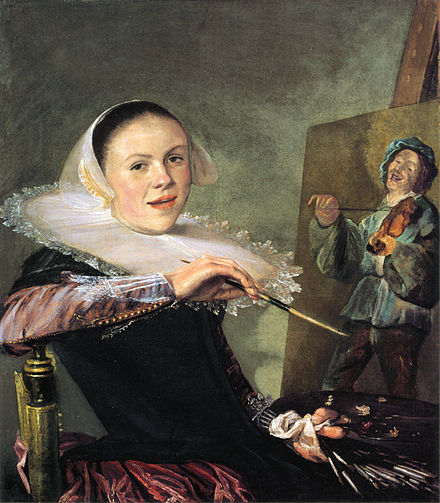
During her life her works were highly recognized, but she got forgotten after her death and rediscovered in the 19th century. In her paintings could be identified the acronym "JL", asually followed by a star, she was the first woman to be inserted in the Guild of St. Luke, the guild Haarlem's artists.
-Artemisia Gentileschi (Italian, 1593-1656)
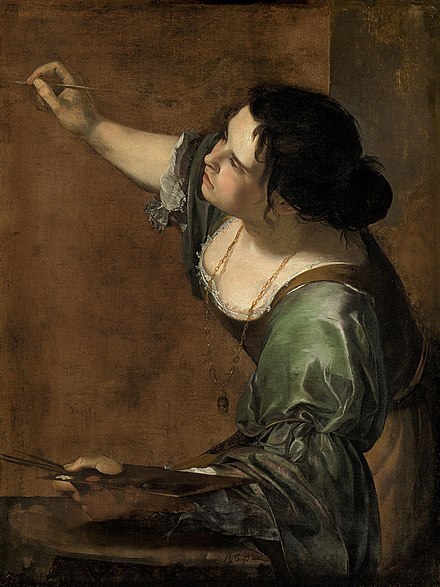
"... Si è talmente appraticata che posso osar de dire che hoggi non ci sia pare a lei, havendo fatto opere che forse i principali maestri di questa professione non arrivano al suo sapere". This is how the father Orazio talked about his nineteen year old daughter to the Medici's court in Florence.
In 1611, Artemisia got raped, and she had to Undergo a humiliating trial, just to marry so that she could "Restore one's reputation" , according to the morality of the time. Only after a few years Artemisia managed to regain her value, in Florence, in Rome, in Naples and even in England, her oldest surviving work is "Susanna and the elders".
-Elisabeth Louise Vigèe Le Brun (French, 1755-1842)
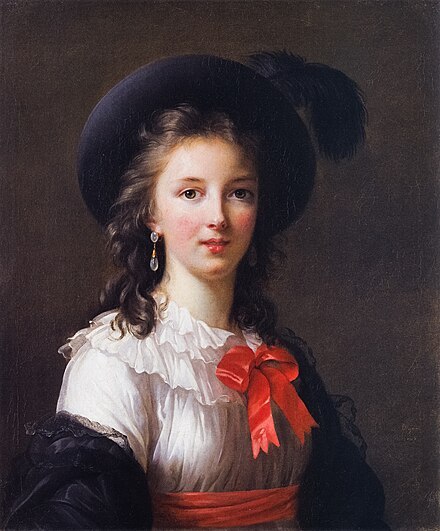
She was a potrait artists who created herself a name during the Ancien Règime, serving as the potrait painting of the Queen of France Marie Antoinette, she painted 600 portraits and 200 landscapes in the course of her life.
-Augusta Savage (Afro-American, 1892-1962)
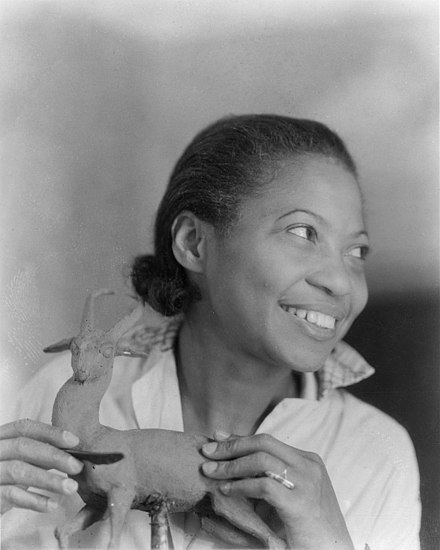
Augusta started making figures when she was a child, which most of them were small animals made out of red clay of her hometown, she kept model claying, and during 1919, at the Palm Beach County Fair, she won $25 prize and ribbon for most original exhibit. After completing her studies, Savage worked in Manhattan steam laundries to support her family along with herself. After a violent stalking made by Joe Gould that lasted for two decades, the stalker died in 1957 after getting lobotomized. In 2004, a public high school, Augusta Fells Savage Institute of Visual Arts, in Baltimore, opened.
-Marie Ellenrieder (German,1791-1863)
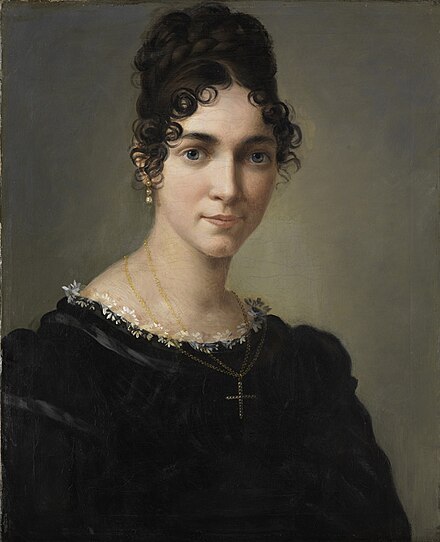
She was known for her portraits and religious paintings. During a two years long stay in Rome, she met some Nazarenes (group of early 19th century German romantic painters who wanted to revive spirituality in art),after becoming a student of Friedrich Overbeck and after being heavily influenced by a friend, she began painting religious image, getting heavily inspired by the Italian renaissance, more specifically by the artist Raphael. In 1829, she became a court painter to Grand Duchess Sophie of Baden.
-Berthe Marie Pauline Morisot (French,1841-1893)
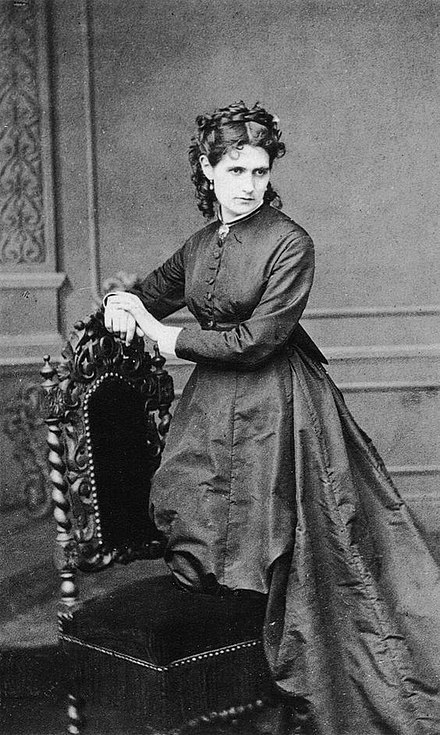
Morisot studied at the Louvre, where she met Edouard Manet, which became her friend and professor. During 1874 she participated at her first Impressionist exhibition, and in 1892 sets up her own solo exhibition.
-Edmonia Lewis or also called "wildfire" (mixed African-American and Native American 1844-1907)
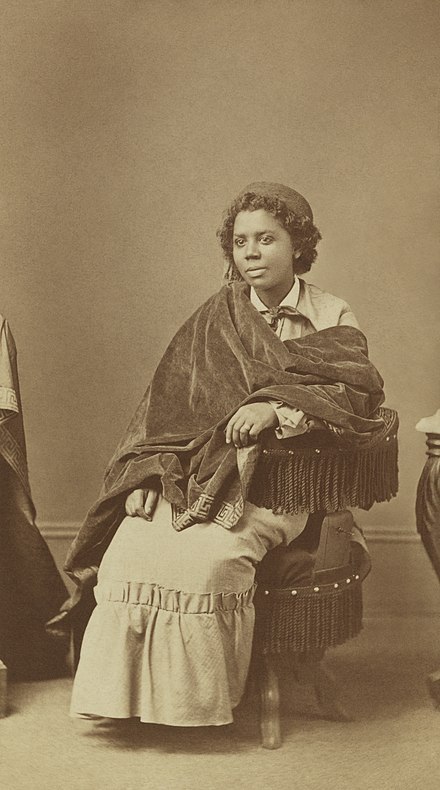
Edmonia was born in Upstate New York but she worked for most of her career in Rome, Italy. She was the first ever African American and Native American sculptor to achieve national and international fame, she began to gain prominence in the USA during the Civil Ware. She was the first black woman artist who has participated and has been recognized to any extent by the American artistic mainstream. She Also in on Molefi Kete Asante's list of 100 Greatest African Americans.
-Marie Gulliemine Benoist (French, 1768-1826)
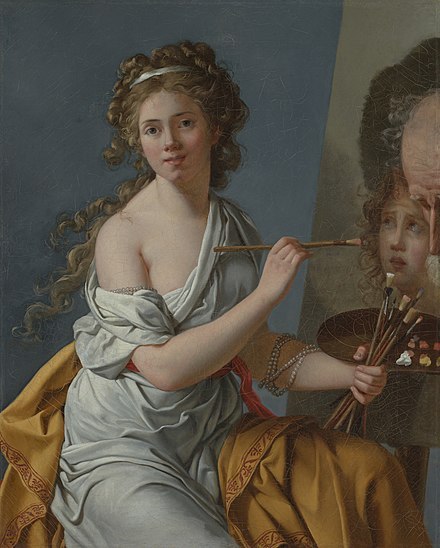
Daughter of a civil servant, Marie was A pupil of Jaques-Louis David, whose she shared the revolutionary ideas with, painting innovative works that have caused whose revolutionary ideals he shared, painting innovative works that caused discussion. She opened a school for young girl artists, but the marriage with the banker Benoist and the political career Of the husband had slowly had effect on her artistic career, forcing her to stop painting. Her most famous work is Potrait of Madeline, which six years before slavery was abolished, so that painting became a simbol for women's emancipation and black people's rights.
-Lavinia Fontana (Italian, 1552-1614)

She is remembered for being the first woman artist to paint an altarpiece and for painting the first female nude by a woman (Minerva in the act of dressing), commissioned by Scipione Borghese.
-Elisabetta Sirani. (Italian, 1698-1665)
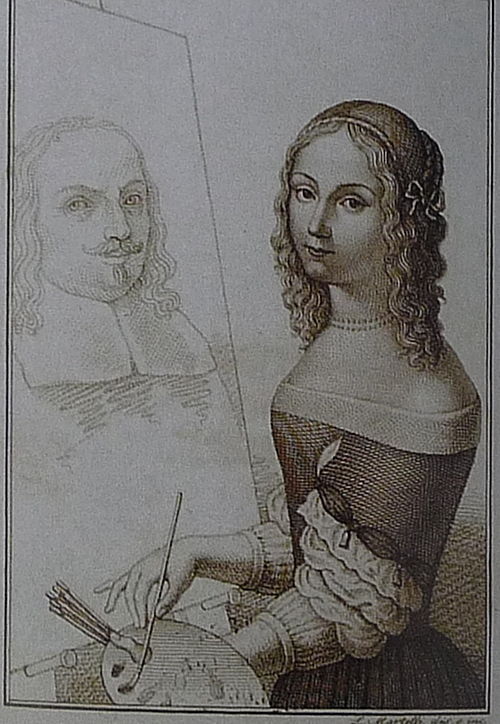
Her admirable artistic skills, that would vary from painting, drawing and engraving, permitted her, in 1660, to enter in the National Academy of S. Luca, making her work as s professor. After two years she replaced her father in his work of his Artistic workshop, turning it into an art schools for girls, becoming the first woman in Europe to have a girls' school of painting, like Artemisia Gentileschi, she represent female characters as strong and proud, mainly drawn from Greek and Roman stories. (ex. Timoclea Kills The Captain of Alexander the Great, 1659).
#judith leyster#artemisia gentileschi#Elisabeth Louise Vigèe Le Brun#Augusta Savage#Marie Ellenrieder#berthe morisot#Edmonia Lewis#Marie Gulliemine Benoist#Lavinia Fontana#Elisabetta Sirani#women artists#renaissance#baroque#art#women in art#artist women#feminism#women history#radical feminists do touch#radical feminists please interact#history#terfblr#terfsafe#cultura#culture
917 notes
·
View notes
Note
I've seen a post you've reblogged and added to, among many things about women showing nipples. Can you recommend any ref material (articles, videos, etc.) are share your knowledge about this? Cause I'm curious about that, as nowadays going out in a shirt without a bra makes you indecent, while in like 90s it was okayish? I wonder how it was in previous centuries.
There is a really cool academic paper about bare breast dresses in 17th century England specifically. I think anyone can read it by creating a free account.
Abby Cox also has a good video about the cleavage during the past 500 years in which she goes through also the nip slip phenomena.
I don't have other sources that specifically focus on this subject, though many sources about specific decades touch on it, but I do have my primary source image collection, so I can sum up the history of the bare nipple.
So my findings from primary source images (I could be wrong and maybe I just haven't found earlier examples) is that the Venetians were the first ones to show the nipple for courtly fashion. At the same time in other places in Europe they sported the early Elizabethan no-boob style that completely covered and flattened the chest. In the other corners of Italy the necklines were also low but less extreme. Venetian kirtle necklines dropped extremely low as early as 1560s and they combined extremely sheer, basically see-through partlets with their kirtle. First example below is a 1565-70 portrait of a Venetian lady with the nipples just barely covered waiting slip into view with a movement of arm. There was an even more extreme version of this with the kirtle being literally underboob style, still with a sheer doublet. Though I believe this was not quite for the respectable ladies, since I have only seen it depicted on high class courtesans. They were not exactly respectable ladies, but they did have quite good social position. The second example is a 1570s depiction of a courtesan, which is revealed by the horned hairstyle. By the end of the century this underbust style with only see through fabric covering breasts, had become respectable. In the last example it's shown on the wife of the Venetian doge in 1597.
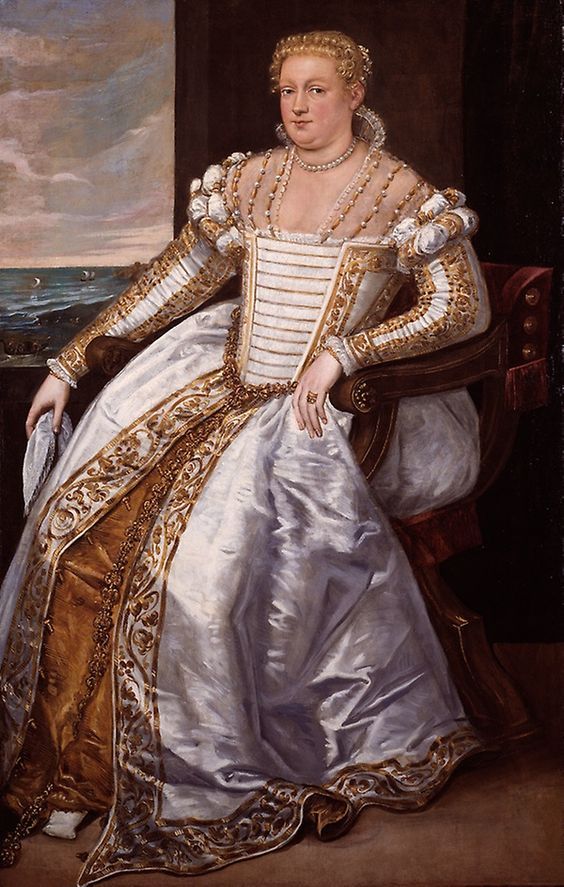
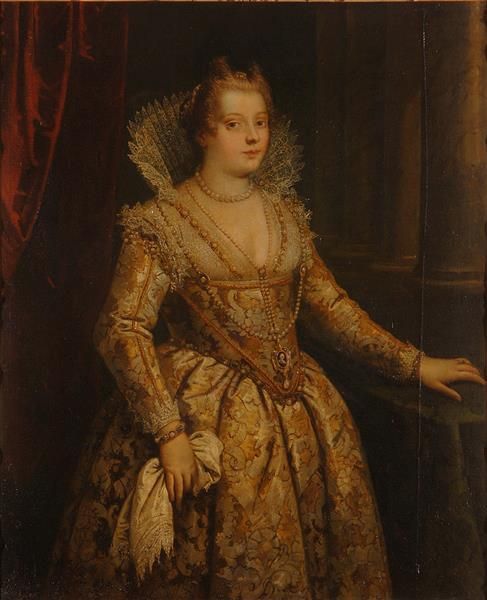

Around the same time, at the very end of 1500s, the extremely low cut bodice fashion enters rest of Europe. The low cut style was present in the bodices of all classes, but the nipple was really only an aristocrat thing. The lower classes would cover their breasts with a partlet, that was not sheer. Bare breast was ironically from our perspective a show of innocence, youthful beauty and virtue, and to pull off the style with respect, you also had to embody those ideals. Lower class women were considered inherently vulgar and lacking virtue, so a nipple in their case was seen as indecent. Bare boobs were also a sort of status symbol, since the upper class would hire wet nurses to breastfeed their children so they could show of their youthful boobs.
Covering partlets and bodices were still also used in the first decade of 1600s by nobles and the nip slip was mostly reserved for the courtly events. The first image below is an early example of English extremely low neckline that certainly couldn't contain boobs even with a bit of movement from 1597. The 1610s started around 5 decades of fashion that showed the whole boob. The first three were the most extreme. Here's some highlights: The second image is from 1619.
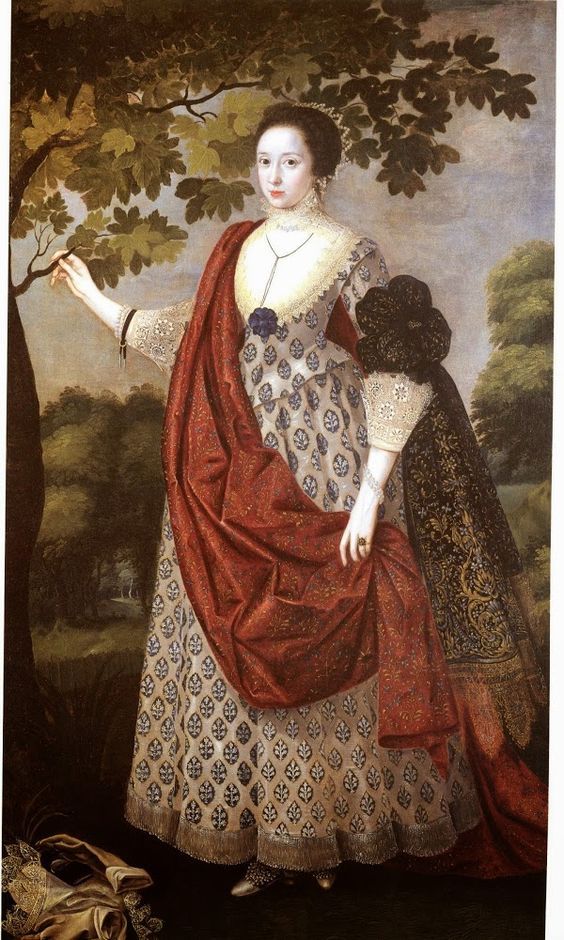

Here the first, very much showing nipples, from c. 1630. The second from 1632.
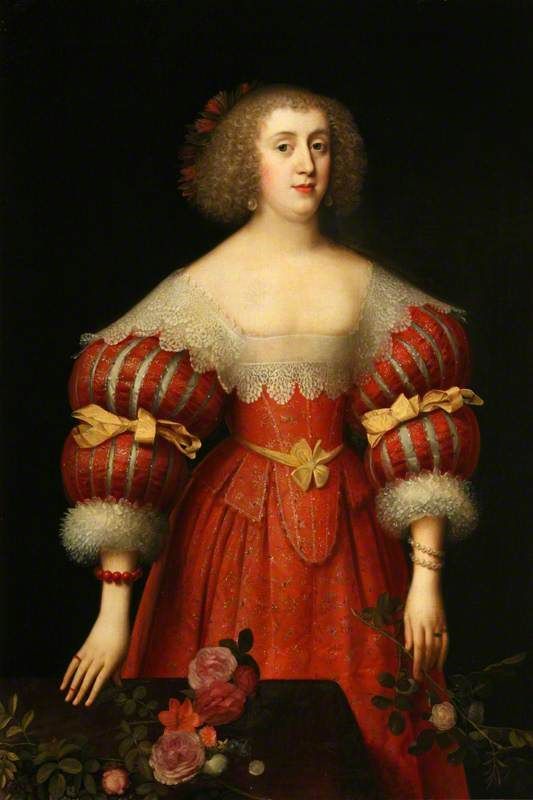
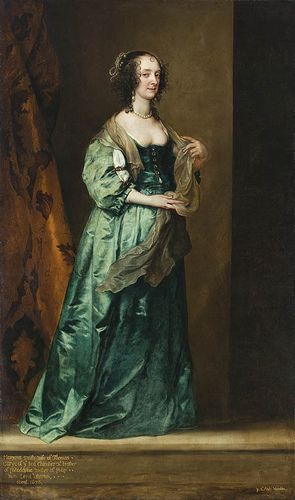
The neckline would slowly and slightly rise during the next decades, but nip slips were still expected. Here's an example from 1649 and then from 1650-55. In 1660s the neckline would get still slightly higher and by 1870s it was in a not very slippable hight. The necklines would stay low for the next century, though mostly not in boob showing territory, but we'll get there. But I will say that covering the neckline in casual context was expected. Boobs were mostly for fancy occasions. It was considered vain to show off your boobs when the occasion didn't call for it and covering up during the day was necessary for a respectable lady. You wouldn't want to have tan in your milk-white skin like a poor, and also they didn't have sun screen so burning was a reasonable concern.

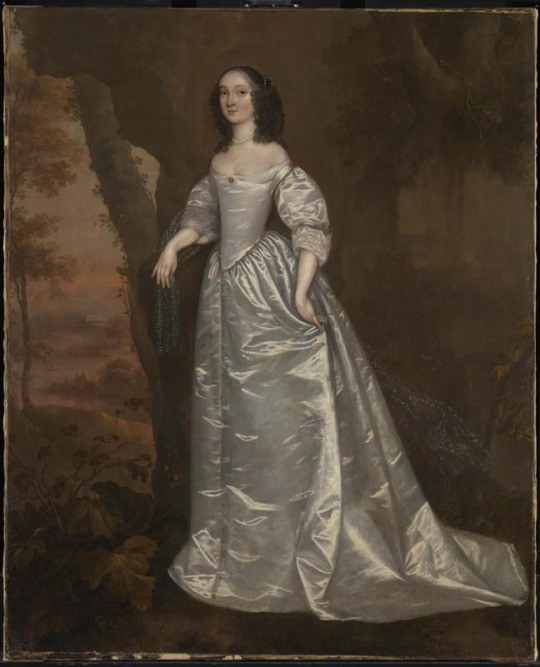
1720s to 1740s saw necklines that went to the nip slip territory, though they didn't go quite as low as 100 years earlier. The nipple was present in the French courtly fashion especially and rouging your nipples to enhance them was popular. Émilie Du Châtelet (1706-1749), who was an accomplished physicist and made contributions to Newtonian mechanics, was known in the French court to show off her boobies. An icon. Here she is in 1748. Here's another example from this era from 1728.
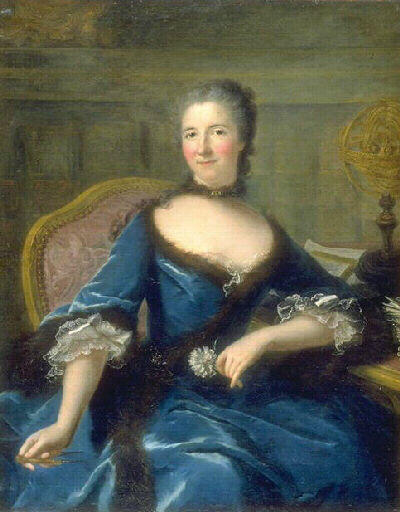
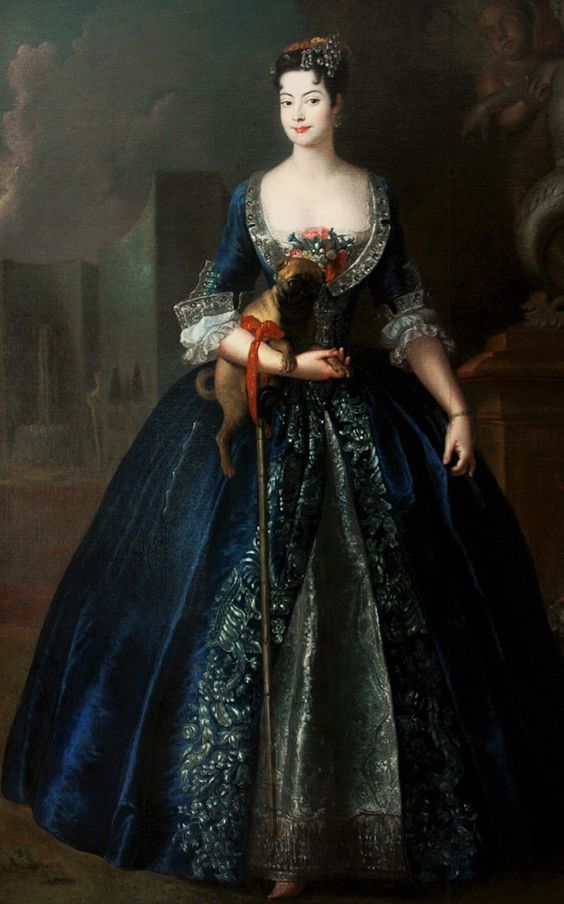
The Rococo neckline never got high, but in the middle of the century it was less low till 1770s when it plunged into new lows. In 1770s the fashion reached a saturation point, when everything was the most. This included boobs. The most boob visible. There was a change in the attitudes though. The visible boob was not a scandal, but it was risque, instead of sing of innocent and did cause offense in certain circles. I think it's because of the French revolution values gaining momentum. I talked about this in length in another post, mostly in context of masculinity, but till that point femininity and masculinity had been mostly reserved for the aristocracy. Gender performance was mostly performance of wealth. The revolutionaries constructed new masculinity and femininity, which laid the groundwork for the modern gender, in opposition to the aristocracy and their decadence. The new femininity was decent, moral and motherly, an early version of the Victorian angel of the house. The boob was present in the revolutionary imagery, but in an abstract presentation. I can't say for sure, but I think bare breasts became indecent because it was specifically fashion of the indecent French aristocracy.
Here's example somewhere from the decade and another from 1778. The neckline stayed quite low for the 1780s, but rose to cover the boobs for the 1790s.

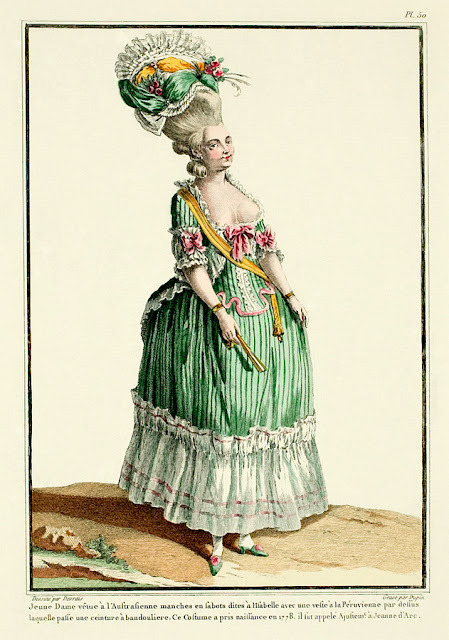
The nipple didn't stay hidden for long but made a quick comeback in the Regency evening fashion. It was somewhat scandalous by this point, and the nipple and sheer fabrics of the Regency fashion gained much scorn and satire. The styles that were in the high danger nip slip territory and those that allowed the nipple to show through fabric, were still quite popular. The sleeves had been mid length for two centuries, but in 1790s they had made a split between evening and day wear. The evening sleeves were tiny, just covering the shoulder. Showing that would have been a little too much. Like a bare boob? A risque choice but fine. A shoulder? Straight to the horny jail. (I'm joking they did have sheer sleeves and sometimes portraits with exposed shoulder.) But long sleeves became the standard part of the day wear. Getting sun was still not acceptable for the same reasonable and unreasonable reasons. Day dresses did also usually have higher necklines or were at least worn with a chemisette to cover the neckline. Fine Indian muslin was a huge trend. It was extremely sheer and used in multiple layers to build up some cover. There were claims that a gust of wind would render the ladies practically naked, though because they were wearing their underclothing including a shift, which certainly wasn't made from the very expensive muslin, I'm guessing this was an exaggeration. Especially though in the first decade, short underboob stays were fairly popular, so combined with a muslin, nipples were seen. Here's an early 1798 example of exactly that. The short stays did disappear eventually, but in 1810s the extremely small bodices did provide nip slip opportunities, as seen in this 1811 fashion plate.
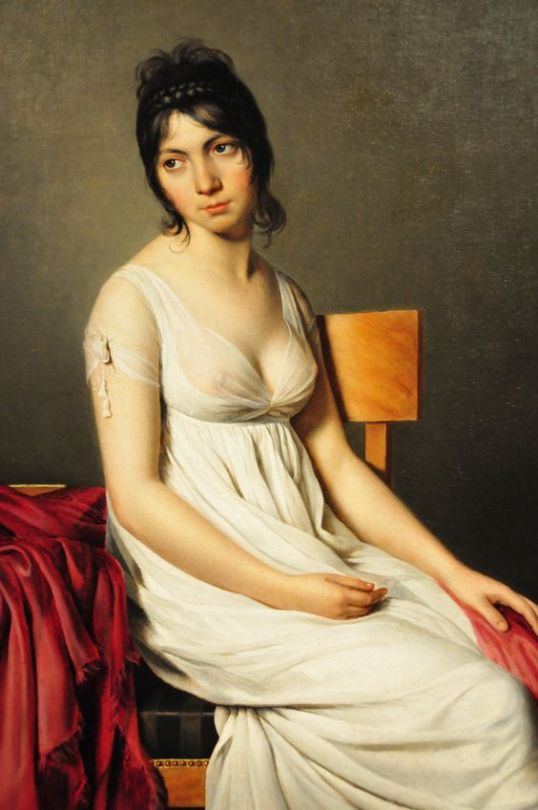
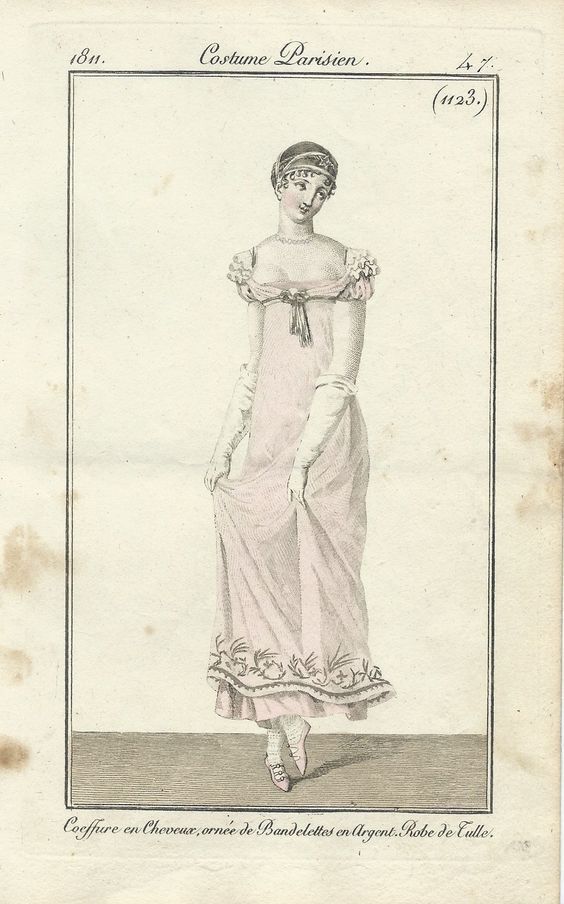
Victorian moralizing did fully kill the nip slip, though at least they were gender neutral about it. The male nipple was just as offensive to them. In 1890s, when bodybuilding became a big thing, bodybuilder men were arrested for public indecency for not wearing a shirt.
#there was also the new femininity aspect to regency nipple which had to do with breastfeeding becoming fashionable among upper class#it's about the whole motherly thing that came with the french revolution#i can't remember the book i read it from so i didn't go into it because i couldn't remember the details lol#but it did definitely have an effect to the fashion and to the perception of nipple#historical fashion#fashion history#history#dress history#fashion#answers#painting#fashion plate#renaissance fashion#elizabethan fashion#rococo fashion#baroque fashion#regency fashion#will tumblr prove itself to be again more prudish than elizabethans and label my post as mature content?#remains to be seen
504 notes
·
View notes
Text






JSTOR Articles on the History of Witchcraft, Witch Trials, and Folk Magic Beliefs
This is a partial of of articles on these subjects that can be found in the JSTOR archives. This is not exhaustive - this is just the portion I've saved for my own studies (I've read and referenced about a third of them so far) and I encourage readers and researchers to do their own digging. I recommend the articles by Ronald Hutton, Owen Davies, Mary Beth Norton, Malcolm Gaskill, Michael D. Bailey, and Willem de Blecourt as a place to start.
If you don't have personal access to JSTOR, you may be able to access the archive through your local library, university, museum, or historical society.
Full text list of titles below the cut:
'Hatcht up in Villanie and Witchcraft': Historical, Fiction, and Fantastical Recuperations of the Witch Child, by Chloe Buckley
'I Would Have Eaten You Too': Werewolf Legends in the Flemish, Dutch and German Area, by Willem de Blecourt
'The Divels Special Instruments': Women and Witchcraft before the Great Witch-hunt, by Karen Jones and Michael Zell
'The Root is Hidden and the Material Uncertain': The Challenges of Prosecuting Witchcraft in Early Modern Venice, by Jonathan Seitz
'Your Wife Will Be Your Biggest Accuser': Reinforcing Codes of Manhood at New England Witch Trials, by Richard Godbeer
A Family Matter: The CAse of a Witch Family in an 18th-Century Volhynian Town, by Kateryna Dysa
A Note on the Survival of Popular Christian Magic, by Peter Rushton
A Note on the Witch-Familiar in Seventeenth Century England, by F.H. Amphlett Micklewright
African Ideas of Witchcraft, by E.G. Parrinder
Aprodisiacs, Charms, and Philtres, by Eleanor Long
Charmers and Charming in England and Wales from the Eighteenth to the Twentieth Century, by Owen Davies
Charming Witches: The 'Old Religion' and the Pendle Trial, by Diane Purkiss
Demonology and Medicine in the Sixteenth and Seventeenth Centuries, by Sona Rosa Burstein
Denver Tries A Witch, by Margaret M. Oyler
Devil's Stones and Midnight Rites: Megaliths, Folklore, and Contemporary Pagan Witchcraft, by Ethan Doyle White
Edmund Jones and the Pwcca'r Trwyn, by Adam N. Coward
Essex County Witchcraft, by Mary Beth Norton
From Sorcery to Witchcraft: Clerical Conceptions of Magic in the Later Middle Ages, by Michael D. Bailey
German Witchcraft, by C. Grant Loomis
Getting of Elves: Healing, Witchcraft and Fairies in the Scottish Witchcraft Trials, by Alaric Hall
Ghost and Witch in the Sixteenth and Seventeenth Centuries, by Gillian Bennett
Ghosts in Mirrors: Reflections of the Self, by Elizabeth Tucker
Healing Charms in Use in England and Wales 1700-1950, by Owen Davies
How Pagan Were Medieval English Peasants?, by Ronald Hutton
Invisible Men: The Historian and the Male Witch, by Lara Apps and Andrew Gow
Johannes Junius: Bamberg's Famous Male Witch, by Lara Apps and Andrew Gow
Knots and Knot Lore, by Cyrus L. Day
Learned Credulity in Gianfrancesco Pico's Strix, by Walter Stephens
Literally Unthinkable: Demonological Descriptions of Male Witches, by Lara Apps and Andrew Gow
Magical Beliefs and Practices in Old Bulgaria, by Louis Petroff
Maleficent Witchcraft in Britian since 1900, by Thomas Waters
Masculinity and Male Witches in Old and New England, 1593-1680, by E.J. Kent
Methodism, the Clergy, and the Popular Belief in Witchcraft and Magic, by Owen Davies
Modern Pagan Festivals: A Study in the Nature of Tradition, by Ronald Hutton
Monstrous Theories: Werewolves and the Abuse of History, by Willem de Blecourt
Neapolitan Witchcraft, by J.B. Andrews and James G. Frazer
New England's Other Witch-Hunt: The Hartford Witch-Hunt of the 1660s and Changing Patterns in Witchcraft Prosecution, by Walter Woodward
Newspapers and the Popular Belief in Witchcraft and Magic in the Modern Period, by Owen Davies
Occult Influence, Free Will, and Medical Authority in the Old Bailey, circa 1860-1910, by Karl Bell
Paganism and Polemic: The Debate over the Origins of Modern Pagan Witchcraft, by Ronald Hutton
Plants, Livestock Losses and Witchcraft Accusations in Tudor and Stuart England, by Sally Hickey
Polychronican: Witchcraft History and Children, interpreting England's Biggest Witch Trial, 1612, by Robert Poole
Publishing for the Masses: Early Modern English Witchcraft Pamphlets, by Carla Suhr
Rethinking with Demons: The Campaign against Superstition in Late Medieval and Early Modern Europe from a Cognitive Perspective, by Andrew Keitt
Seasonal Festivity in Late Medieval England, Some Further Reflections, by Ronald Hutton
Secondary Targets: Male Witches on Trial, by Lara Apps and Andrew Gow
Some Notes on Modern Somerset Witch-Lore, by R.L. Tongue
Some Notes on the History and Practice of Witchcraft in the Eastern Counties, by L.F. Newman
Some Seventeenth-Century Books of Magic, by K.M. Briggs
Stones and Spirits, by Jane P. Davidson and Christopher John Duffin
Superstitions, Magic, and Witchcraft, by Jeffrey R. Watt
The 1850s Prosecution of Gerasim Fedotov for Witchcraft, by Christine D. Worobec
The Catholic Salem: How the Devil Destroyed a Saint's Parish (Mattaincourt, 1627-31), by William Monter
The Celtic Tarot and the Secret Tradition: A Study in Modern Legend Making, by Juliette Wood
The Cult of Seely Wights in Scotland, by Julian Goodare
The Decline of Magic: Challenge and Response in Early Enlightenment England, by Michael Hunter
The Devil-Worshippers at the Prom: Rumor-Panic as Therapeutic Magic, by Bill Ellis
The Devil's Pact: Diabolic Writing and Oral Tradition, by Kimberly Ball
The Discovery of Witches: Matthew Hopkins' Defense of his Witch-hunting Methods, by Sheilagh Ilona O'Brien
The Disenchantment of Magic: Spells, Charms, and Superstition in Early European Witchcraft Literature, by Michael D. Bailey
The Epistemology of Sexual Trauma in Witches' Sabbaths, Satanic Ritual Abuse, and Alien Abduction Narratives, by Joseph Laycock
The European Witchcraft Debate and the Dutch Variant, by Marijke Gijswijt-Hofstra
The Flying Phallus and the Laughing Inquisitor: Penis Theft in the Malleus Maleficarum, by Moira Smith
The Framework for Scottish Witch-Hunting for the 1590s, by Julian Goodare
The Imposture of Witchcraft, by Rossell Hope Robbins
The Last Witch of England, by J.B. Kingsbury
The Late Lancashire Witches: The Girls Next Door, by Meg Pearson
The Malefic Unconscious: Gender, Genre, and History in Early Antebellum Witchcraft Narratives, by Lisa M. Vetere
The Mingling of Fairy and Witch Beliefs in Sixteenth and Seventeenth Century Scotland, by J.A. MacCulloch
The Nightmare Experience, Sleep Paralysis, and Witchcraft Accusations, by Owen Davies
The Pursuit of Reality: Recent Research into the History of Witchcraft, by Malcolm Gaskill
The Reception of Reginald Scot's Discovery of Witchcraft: Witchcraft, Magic, and Radical Religions, by S.F. Davies
The Role of Gender in Accusations of Witchcraft: The Case of Eastern Slovenia, by Mirjam Mencej
The Scottish Witchcraft Act, by Julian Goodare
The Werewolves of Livonia: Lycanthropy and Shape-Changing in Scholarly Texts, 1550-1720, by Stefan Donecker
The Wild Hunter and the Witches' Sabbath, by Ronald Hutton
The Winter Goddess: Percht, Holda, and Related Figures, by Lotta Motz
The Witch's Familiar and the Fairy in Early Modern England and Scotland, by Emma Wilby
The Witches of Canewdon, by Eric Maple
The Witches of Dengie, by Eric Maple
The Witches' Flying and the Spanish Inquisitors, or How to Explain Away the Impossible, by Gustav Henningsen
To Accommodate the Earthly Kingdom to Divine Will: Official and Nonconformist Definitions of Witchcraft in England, by Agustin Mendez
Unwitching: The Social and Magical Practice in Traditional European Communities, by Mirjam Mencej
Urbanization and the Decline of Witchcraft: An Examination of London, by Owen Davies
Weather, Prayer, and Magical Jugs, by Ralph Merrifield
Witchcraft and Evidence in Early Modern England, by Malcolm Gaskill
Witchcraft and Magic in the Elizabethan Drama by H.W. Herrington
Witchcraft and Magic in the Rochford Hundred, by Eric Maple
Witchcraft and Old Women in Early Modern Germany, by Alison Rowlands
Witchcraft and Sexual Knowledge in Early Modern England, by Julia M. Garrett
Witchcraft and Silence in Guillaume Cazaux's 'The Mass of Saint Secaire', by William G. Pooley
Witchcraft and the Early Modern Imagination, by Robin Briggs
Witchcraft and the Western Imagination by Lyndal Roper
Witchcraft Belief and Trals in Early Modern Ireland, by Andrew Sneddon
Witchcraft Deaths, by Mimi Clar
Witchcraft Fears and Psychosocial Factors in Disease, by Edward Bever
Witchcraft for Sale, by T.M. Pearce
Witchcraft in Denmark, by Gustav Henningsen
Witchcraft in Germany, by Taras Lukach
Witchcraft in Kilkenny, by T. Crofton Croker
Witchcraft in Anglo-American Colonies, by Mary Beth Norton
Witchcraft in the Central Balkans I: Characteristics of Witches, by T.P. Vukanovic
Witchcraft in the Central Balkans II: Protection Against Witches, by T.P. Vukanovic
Witchcraft Justice and Human Rights in Africa, Cases from Malawi, by Adam Ashforth
Witchcraft Magic and Spirits on the Border of Pennsylvania and West Virginia, by S.P. Bayard
Witchcraft Persecutions in the Post-Craze Era: The Case of Ann Izzard of Great Paxton, 1808, by Stephen A. Mitchell
Witchcraft Prosecutions and the Decline of Magic, by Edward Bever
Witchcraft, by Ray B. Browne
Witchcraft, Poison, Law, and Atlantic Slavery, by Diana Paton
Witchcraft, Politics, and Memory in Seventeeth-Century England, by Malcolm Gaskill
Witchcraft, Spirit Possession and Heresy, by Lucy Mair
Witchcraft, Women's Honour and Customary Law in Early Modern Wales, by Sally Parkin
Witches and Witchbusters, by Jacqueline Simpson
Witches, Cunning Folk, and Competition in Denmark, by Timothy R. Tangherlini
Witches' Herbs on Trial, by Michael Ostling
#witchcraft#witchblr#history#history of witchcraft#occult#witch trials#research#recommended reading#book recs#jstor
2K notes
·
View notes
Text
Paradise Lost: How John Milton's 1667 work influenced "Hazbin Hotel"
I've been thinking about why the "fruit of knowledge" in Hazbin Hotel is depicted as an apple, as opposed to another fruit that would've been more accurate to the Middle East during the Fall of Man, as well as how Paradise Lost by John Milton (1667) influenced the show.

Per one source:
"Because the Hebrew Bible describes the forbidden fruit only as 'peri', the term for general fruit, no one knows [what exactly type of fruit it was]. It could be a fruit that doesn't exist anymore. Historians have speculated it may have been any one of these fruits: pomegranate, mango, fig, grapes, etrog or citron, carob, pear, quince, or mushroom."
Per Wikipedia:
"The pseudepigraphic Book of Enoch describes the tree of knowledge: 'It was like a species of the Tamarind tree, bearing fruit which resembled grapes extremely fine; and its fragrance extended to a considerable distance. I exclaimed, How beautiful is this tree, and how delightful is its appearance!' (1 Enoch 31:4)."
In Jewish and Islamic traditions, the "fruit of knowledge" is commonly identified with grapes. The Zohar explains that Noah attempted (but failed) to rectify the sin of Adam by using grape wine for holy purposes. Today, the "Noah grape" is still used to make white wine.

Furthermore:
"The association of the pomegranate with knowledge of the underworld as provided in the Ancient Greek legend of Hades and Persephone may also have given rise to an association with knowledge of the 'otherworld', tying-in with knowledge that is forbidden to mortals. It is also believed Hades offered Persephone a pomegranate to force her to stay with him in the underworld for 6 months of the year. Hades is the Greek god of the underworld, and the Bible states that whoever eats the forbidden fruit shall die."
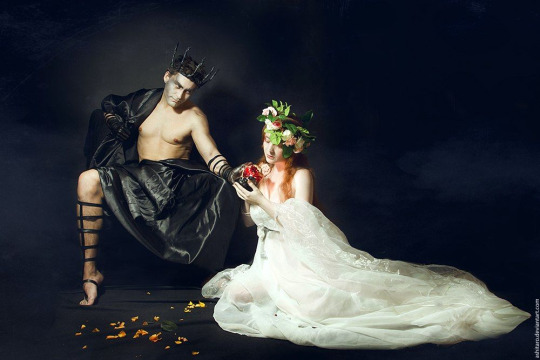
So, how then did the apple become the foremost symbol of the "fruit of knowledge"? You can partly thank Paradise Lost by English poet John Milton, a work which the lore of Hazbin Hotel is based off of.
Milton published the book in 1667, a time when the hedonistic Restoration era was in full swing. The exiled King Charles II was restored to the throne as King of England in 1660, and was a party animal, with dozens of mistresses, and nicknamed both the "playboy prince" and "Old Rowley", the latter after his favorite lustful stallion.
However, the association of the "fruit of knowledge" began with a Latin pun long before Milton immortalized the association in Paradise Lost. Per the linked article above by Nina Martyris for NPR:
"In order to explain, we have to go all the way back to the fourth century A.D., when Pope Damasus ordered his leading scholar of scripture, Jerome, to translate the Hebrew Bible into Latin. Jerome's path-breaking, 15-year project, which resulted in the canonical 'Vulgate', used the Latin spoken by the common man. As it turned out, the Latin words for evil and apple are the same: 'malus'.
[...] When Jerome was translating the 'Tree of the Knowledge of Good and Evil', the word 'malus' snaked in. A brilliant but controversial theologian, Jerome was known for his hot temper, but he obviously also had a rather cool sense of humor.
'Jerome had several options,' says Robert Appelbaum, a professor of English literature at Sweden's Uppsala University. 'But he hit upon the idea of translating 'peri' as 'malus', which in Latin has two very different meanings. As an adjective, 'malus' means 'bad' or 'evil'. As a noun it seems to mean an apple, in our own sense of the word, coming from the very common tree now known officially as the 'Malus pumila'. So Jerome came up with a very good pun.'
The story doesn't end there. 'To complicate things even more,' says Appelbaum, 'the word 'malus' in Jerome's time, and for a long time after, could refer to any fleshy seed-bearing fruit. A pear was a kind of 'malus'. So was the fig, the peach, and so forth.'
Which explains why Michelangelo's Sistine Chapel fresco features a serpent coiled around a fig tree. But the apple began to dominate Fall artworks in Europe after the German artist Albrecht Dürer's famous 1504 engraving depicted the First Couple counterpoised beside an apple tree. It became a template for future artists such as Lucas Cranach the Elder, whose luminous Adam and Eve painting is hung with apples that glow like rubies.
Milton, then, was only following cultural tradition. But he was a renowned Cambridge intellectual fluent in Latin, Greek and Hebrew, who served as secretary for foreign tongues to Oliver Cromwell during the Commonwealth. If anyone was aware of the 'malus' pun, it would be him, and yet he chose to run it with it. Why?
Appelbaum says that Milton's use of the term 'apple' was ambiguous. 'Even in Milton's time the word had two meanings: either what was our common apple, or, again, any fleshy seed-bearing fruit. Milton probably had in mind an ambiguously named object with a variety of connotations as well as denotations, most but not all of them associating the idea of the apple with a kind of innocence, though also with a kind of intoxication, since hard apple cider was a common English drink.'
It was only later readers of Milton, says Appelbaum, who thought of 'apple' as 'apple', and not any seed-bearing fruit. For them, the forbidden fruit became synonymous with the 'malus pumila'. As a widely read canonical work, 'Paradise Lost' was influential in cementing the role of apple in the Fall of Man story."
To tie this back into John Milton's relationship with King Charles II of England, as mentioned, Milton originally served Oliver Cromwell, Lord Protector of England, and the English Commonwealth, which was formed with the overthrow and execution of King Charles I on 30 January 1649, following the bloody English Civil War (1642 – 1651).
The King's two sons - the newly-christened King Charles II, the elder, and James, Duke of York (King James II), the younger - fled into exile on the European continent. However, with the death of Oliver Cromwell on 3 September 1658 came the 2-year-long dissolution of the English Commonwealth, and the restoration of the monarchy.
As for Milton himself, we can look to an article by Bill Potter.
Milton, born on 9 December 1608, was around 51-52 years old when King Charles II was restored to the throne. He attended Christ's Church, Cambridge in his youth, and mastered at least six languages, as well as history and philosophy; making him, perhaps, the most knowledgeable poet in history. He spent more than a year travelling across Europe, conversing with and learning from intellectuals, linguists, poets, and artists, including the famous Galileo Galilei.
However, Milton was a controversial figure of his time, being unafraid to criticize institutions of authority; arguing that "divorce was Biblical", for which he was routinely condemned; joining the Puritans; penning the Areopagitica, a treatise on liberty in favor of Parliament and the Roundhead rebels, during the reign of King Charles I, arguing that the King must be held accountable by the people; and agreed with and justified the murder of King Charles I, for which Parliament hired him in 1649 as a propagandist and correspondence secretary to foreign powers, on account of his fiery manifestos against "the man".
The collapse of the Commonwealth with the death of Oliver Cromwell in 1658 did not deter Milton from continued political writing against the monarchy and the new public sentiment that brought about its Restoration under King Charles II in 1660. On the contrary, Milton - now totally blind, having lost his eyesight by the age of 44 in 1652, a decade earlier - began writing Paradise Lost in 1661, and spent the next six years dictating the work to transcribers.
A supporter of regicide, Milton was also forced into exile himself, and faked his own death, as Charles refused to pardon - and sought to execute - any of those directly involved with his father's murder. Milton's friends held a mock funeral for Milton on 27 August 1660, just months after the coronation of King Charles II on 23 April 1660.
King Charles II commented that he "applauded his [Milton's] policy in escaping the punishment of death [execution for treason] by a reasonable show of dying", but insisted on a public spectacle nonetheless by having Milton's writings burned by the public hangman.
After eventually obtaining a general pardon from King Charles II, Milton was imprisoned, and released, likely due to political friends in high places. He died, aged 64, in 1674. His theological views were sometimes considered heterodox by the best Puritans, and his political views came close to getting him executed on several occasions. His poetry, however, has endured as some of the greatest works in the English language, especially Paradise Lost; much of his greatest work was written during his 22 years of complete blindness.
One of the main factors in King Charles II deciding to grant a pardon to Milton was, ironically, Paradise Lost. While originally written by Milton as a scathing criticism of King Charles II and the monarchy - depicting Lucifer Morningstar as a sympathetic rebel against God, with King Charles II claiming that is right to rule came from "divine ordainment" - Charles II enjoyed the work, and authorized its publication on 20 August 1667. We know this because a 1668 copy of Paradise Lost in royal bindings by Samuel Mearne, bound lovingly in a fine red leather made of goat skins tanned with sumac, and stamped in gold with the royal cypher of King Charles II, was found. The endpapers bore a watermark with the royal arms of Charles II.
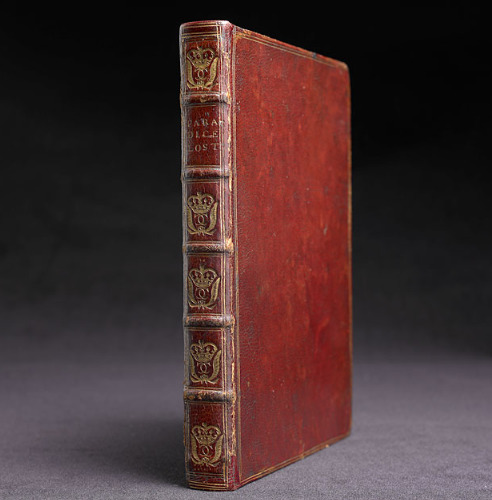
Per one Miltonian scholar: "The most single important event in Milton's life was the event against which he struggled most: the Restoration of Charles II, [and his relationship with the King]. Had it not come, we might have never had Paradise Lost...certainly, we should never have had [it] in [its] present power and significance."
Milton followed up Paradise Lost with Paradise Regained in 1671, three years before his death, with advice for King Charles II, urging the hedonistic Charles to "reign over himself and his passions":
"For therein stands the office of a King, His Honour, Vertue, Merit and chief Praise, That for the Publick all this weight he bears. Yet he who reigns within himself, and rules Passions, Desires, and Fears, is more a King; Which every wise and vertuous man attains: And who attains not, ill aspires to rule Cities of men, or head-strong Multitudes, Subject himself to Anarchy within, Or lawless passions in him which he serves." - John Milton, Paradise Regained, Book II, lines 463-472
To summarize: "If we must have a King back again, my Lord, please try to be a good man, unlike your father, who fell to his pride, [which was also the downfall of Lucifer]."
To quote another source: "Though the passage begins by noting that the office of a King is to bear the weight of public concerns, it is the control of one's private concerns that truly set a King apart as a virtuous character. Indeed, so important is self-command that any wise or virtuous man who attains it is like a king; any king who does not practice [self-command] is nothing more than a mere subject, ruled by anarchy and lawlessness."
Milton's words, too, echo a work written by Charles' grandfather, King James VI/I of Scotland and England: Basilikon Doron ("Royal Gift").
Per Wikipedia:
"'Basilikon Doron' (Βασιλικὸν Δῶρον) means 'royal gift' in Ancient Greek, and was written in the form of a private letter to James' eldest son, Henry, Duke of Rothesay (1594–1612). After Henry's death, James gave it to his second son, Charles, born 1600, later King Charles I. Seven copies were printed in Edinburgh in 1599, and it was republished in London in 1603, when it sold in the thousands.
This document is separated into three books, serving as general guidelines to follow to be an efficient monarch. The first describes a king's duty towards God as a Christian. The second focuses on the roles and responsibilities in office. The third concerns proper behaviour in daily life.
As the first part is concerned with being a good Christian, James instructed his son to love and respect God as well as to fear Him. Furthermore, it is essential to carefully study the Scripture (the Bible) and especially specific books in both the Old and New Testaments. Lastly, he must pray often and always be thankful for what God has given him.
In the second book, James encouraged his son to be a good king, as opposed to a tyrant, by establishing and executing laws as well as governing with justice and equality, such as by boosting the economy. The final portion of the Basilikon Doron focuses on the daily life of a monarch.
All of these guidelines composed an underlying code of conduct to be followed by all monarchs and heads of state to rule and govern efficiently. James assembled these directions as a result of his own experience and upbringing. He, therefore, offered the 'Basilikon Doron' ('Royal Gift') to his son, with the hope of rendering him a capable ruler, and perhaps to pass it down to future generations.
Overall, it repeats the argument for the divine right of kings, as set out in 'The True Law of Free Monarchies', which was also written by James. It warns against 'Papists' (Roman Catholics) and derides Puritans, in keeping with his philosophy of following a 'middle path', which is also reflected in the preface to the 1611 King James Bible. It also advocates removing the Apocrypha from the Bible."
King James VI/I further instructed his son and grandson:
"A good monarch must be well acquainted with his subjects, and so it would be wise to visit each of the kingdoms every three years."
"During war or armed conflict, he should choose old-but-good captains to lead an army of young and agile soldiers."
"In the court and the household, [a royal] should carefully select loyal gentlemen and servants to surround him. When the time came to choose a wife, it would be best if she were of the same religion and had a generous estate. However, she must not meddle with governmental politics, but perform her domestic duties."
"As for inheritance, to ensure stability, the kingdom should be left to the eldest son, not divided among all children."
"Lastly, it is most important...that [a royal] would know well his own craft...to properly govern over his subjects. To do so, [one] must study the laws of the kingdom, and actively participate in the council. Furthermore, [one] must be acquainted with mathematics for military purposes, and world history for foreign policy."
"[A royal] must also not drink and sleep excessively. His wardrobe should always be clean and proper, and he must never let his hair and nails grow long. In his writing and speech, he should use honest and plain language."
King James VI/I further supplemented Basilikon Doron with a written treatise titled The True Law of Free Monarchies: Or, The Reciprocal and Mutual Duty Between a Free King and His Natural Subjects.
"It is believed King James VI/I wrote the tract to set forth his idea of absolutist monarchism in clear contrast to the contractarian views espoused by, among others, James' tutor George Buchanan (in 'De Jure Regni apud Scotos'), [which] held the idea that monarchs rule in accordance of some sort of social contract with their people. James saw the divine right of kings as an extension of the apostolic succession, as both not being subjected by humanly laws."
Milton's own Areopagitica was a follow-up on De Jure Regni apid Scotos by George Buchanan, and also to The True Law of Free Monarchies, as well as the idea of the "divine right of kings". It takes its title in part from Areopagitikos (Greek: Ἀρεοπαγιτικός), a speech written by Athenian orator Isocrates in the 4th century BC.
Most importantly, Milton also wrote on the concept of free will: "Milton's ideas were ahead of his time in the sense that he anticipated the arguments of later advocates of freedom of the press by relating the concept of free will, and choice to individual expression and right."
The concept of free will, too, was a major topic explored in Paradise Lost. Per one source: "In 'Paradise Lost', Milton argues that though God foresaw the Fall of Man, he still didn't influence Adam and Eve's free will. [...] God specifically says that he gives his creatures the option to serve or disobey, as he wants obedience that is freely given [or chosen], not forced. Some critics have claimed that the God of the poem undercuts his own arguments; however, Milton did not believe in the Calvinistic idea of 'predestination' (that God has already decided who is going to Hell and who to Heaven), but he often comes close to describing a Calvinistic God. God purposefully lets Lucifer (Satan) escape Hell, and sneak past Uriel into the Garden of Eden, and basically orchestrates the whole situation so that humanity can be easily ruined by a single disobedient act. In describing the Fall of Man before it happens, God already predicts how he will remedy it, and give greater glory to himself by sending his Son [Jesus Christ] to die, and restore the order of Heaven."
In Hazbin Hotel, Adam also describes the Calvinistic idea of 'predestination', and that "the rules are black and white":

However, "This possible predestination leads to the theory of the 'fortunate fall', which is based on Adam's delight at learning of the eventual coming of the Messiah [from his bloodline]. This idea says that God allowed the Fall of Man, so that he could bring good out of it, possibly more good than would have occurred without the Fall, and be able to show his love and power through the incarnation of his Son. In this way, the free will of Adam and Eve (and Lucifer/Satan) remains basically free, but still fits into God's overarching plan."
However, there is one major flaw with this, and that is that we don't know if Jesus Christ exists within the Hazbin Hotel universe or not. Yet Charlie Morningstar, the daughter of Lucifer Morningstar and Lilith, and the "Princess of Hell", is depicted as a savior-esque figure within the show who, like God in Paradise Lost, encourages lowly sinners to choose obedience to God out of their own free will. More interestingly, Charlie does not come from Adam's bloodline; yet, while Lucifer decries 'free will', Charlie supports 'free will' instead.
Perhaps is is merely because Charlie, being the daughter of Lucifer and Lilith, claims to want to fulfill Lilith's "dream" of humanity being empowered in Hell ("The mind is its own place, it can make Heaven out of Hell, or Hell out of Heaven" - Lucifer, Paradise Lost); however, I think it also stems from Charlie having a genuine belief that 'free will', and people choosing to do good instead of evil, is "good" and "Godly".
True to Paradise Lost, this is also in fulfillment of God's plan; and, according to one fanfiction, why God allowed Charlie to be born to Lucifer and Lilith, so that sinners may be redeemed through Charlie.
For more on differing interpretations of 'free will', I suggest reading: "Free Will and the Diminishing Importance of God's Will: A Study of Paradise Lost and Supernatural" by Kimberly Batchelor (2016)
Excerpt: "'Paradise Lost' –and Milton’s purpose for writing the poem— is rooted deeply in postreformation Arminianism and this is apparent in its employment of free will. Chapter 1 argues that Milton turns to free will as a tool to justify the actions of God. Freedom of choice is God-given, and sets up a morality in which right and wrong are dictated by God. Chapter 2 shows that in 'Supernatural', free will is not given by a higher power; and, in fact, free choice functions as an act of defiance against God's will."
This raises the question: Is 'free will' given by God, using Lucifer as his vessel, in Hazbin Hotel, as in Paradise Lost? Or is 'free will' not given by a higher power; and, in fact, an act of defiance against God?
This brings us back around to our first question: Why is an apple, or 'malus', used to depict the "fruit of knowledge", especially if 'malus' means 'bad or evil', whereas Milton depicts 'free will' as God-given?
Well, for one, Lucifer still chooses to associate himself with apple symbolism and imagery, despite being skeptical of free will:


Based on the introduction to Episode 1, Charlie also views 'free will' as a gift (Miltonian), whereas Lucifer appears to view it as a curse.

However, Charlie also notes that it was through the 'gift' of free will that the "root of all evil" entered the world, for if mankind could choose to be good, then they could also choose to be evil ('malus').
John Milton states in Paradise Lost: "Of Man's First Disobedience, and the Fruit Of that Forbidden Tree [malus], whose mortal taste Brought Death (evil, malus) into the World, and all our woe."
Thus, the use of an apple specifically is likely a tie-in to what others have been speculating about a character that series creator Vivienne Medrano (Vivziepop) alluded to a while back: "The Root of All Evil".

However, "Roo" itself is depicted as possessing the body of a human woman, presumably Eve, the first one to eat the "fruit of knowledge":

Thus, we can discern that "Malus" likely refers to this character. (Also see: "Maleficent", a name that also uses the root word "mal", "evil".) As for Roo's intentions, if Charlie is "good" - and, if, in fact, Alastor was sent by "Roo" (Eve) - then they may want for Alastor to work on their behalf to "corrupt" Charlie, or make sure the hotel never succeeds.
This is because demonic power is tied to human souls, and there are "millions of souls" in Hell, which likely fuels the great power of "Roo". The more souls there are in Hell, the more powerful "Roo" becomes. The Overlords also get their demonic power from "millions of souls".

The deal between Eve and "Roo" might even be the first contract, or deal, between a human soul and a demonic entity; in exchange for 'free will', and the knowledge of good and evil, Eve allowed the "Root of All Evil" to inhabit her body, and to escape the void or prison it was confined to by Heaven (Hell?). (For one cannot be 'all-good' unless you attempt to 'eliminate' or 'ablate' evil; and, in Greek mythology, Zeus imprisoned the Titans in Tartarus for all of their evil deeds.)
Another possibility, brought up in an article by Gillian Osborne, is that Lucifer sees the "fruit of knowledge" as an apple, but it may appear as different fruits to different people, depending on how they view it. This also fits with Lucifer and angels being able to easily shapeshift.
In Paradise Lost, only Lucifer describes the fruit as an "apple" (malus), as he associates malus with "bad, evil", while the narrator also describes the fruit as "a mix of different colors" and peach-like. This then begs the question: "Did the fruit of knowledge of good and evil become 'evil' because Eve harbored resentment towards Adam?"
Quote: "Lucifer (Satan) gives Eve yet another hint that this tree may be more complicated than he wishes her to believe: although elsewhere in Milton's poem Eden is heady with its own newness, sprouting spring flowers left and right, the tree of knowledge is already old: its trunk is 'mossie'. Nevertheless, Lucifer claims to wind himself around the tree 'soon'; the quickness of his reported arrival stands in contrast to the timescales required to cover a fruit tree with moss (PL 9.589). Placing Lucifer's winding body between these two timescales—an easeful present and the inhuman scale of natural history—Milton suggests that there is something dangerous in entangling the past with the present. Yet, 'Paradise Lost' also makes deep biblical history feel like present politics for its readers. When Adam and Eve wander out of Eden at the end of the poem, they famously make their way not only into an earthly paradise, but also into the present. Eden's mossy apple tree therefore represents the pitfalls of conflating nature and history, of seeing any action in human history—even Eve's eating of an apple—as natural, if by nature, we mean inevitability. For Milton, history, unlike nature, is directed by humans, progressive, and, like the reading of 'Paradise Lost', hard work. While trees may inevitably collect moss the longer they live, Adam and Eve's labors in the garden, and our labors of reading, require agency and effort. Milton's poem refuses mourning the loss of Eden, [and the perfection of Heaven], in favor of a perpetual, melancholic, recreation of paradise: a present perfecting."
To quote Twisted: The Untold Story of a Royal Vizier, which also draws inspiration from John Milton's Paradise Lost: "It's an unfortunate situation...but you do have a choice [i.e. free will]."
#hazbin hotel#hazbin hotel analysis#hazbin#hazbin analysis#hazbin hotel meta#hazbin meta#hazbin hotel theory#hazbin theory#deep thoughts#john milton#paradise lost#eve hazbin hotel#lucifer hazbin hotel#lucifer morningstar#adam hazbin hotel#lilith hazbin hotel#lilith morningstar#roo hazbin hotel#root of all evil
205 notes
·
View notes
Text
Fashion history resources?
researching fashion for the various time periods has been driving me a little crazy, particularly because when you search up historical fashion, the results overwhelmingly trend towards upper class women (usually aristocracy), then upper class/aristocratic men, then middle class men/women, with little representation of working class women and even less for working class men. (This obviously depends on time period and country; currently, I'm scrounging around for references for servants in 1660s France. Non-European fashion is even harder to research).
So, I figured it could be good to start a chain of resources on fashion history! Here's two that I've been using heavily in researching my current WIP:
Nicole Kipar's Restoration Costume Comes to Life
This truly lovely website which details costumes of the Restoration (1660s England, mostly), and has a gallery collection of paintings of working class people with annotations on what they're wearing, the time period, and their specific social role (i.e., poor peasant, affluent peasant, market trader). It's designed for costume makers, but it's also useful for artists or writers. There are five parts: working class men and women, women of the gentry and aristocracy, men of the gentry and aristocracy, accessories, and a costume focus.
Fashion History Timeline
It is what the name suggests: open source fashion history timeline from prehistory to (afaik) 19th century. I haven't explored much beyond 1660s yet, and generally does seem to focus on fashion of the upper classes, but it's already been so useful.
If anyone has any websites/books/other resources to add, please do!
957 notes
·
View notes
Text
Surviving 17th century bodices
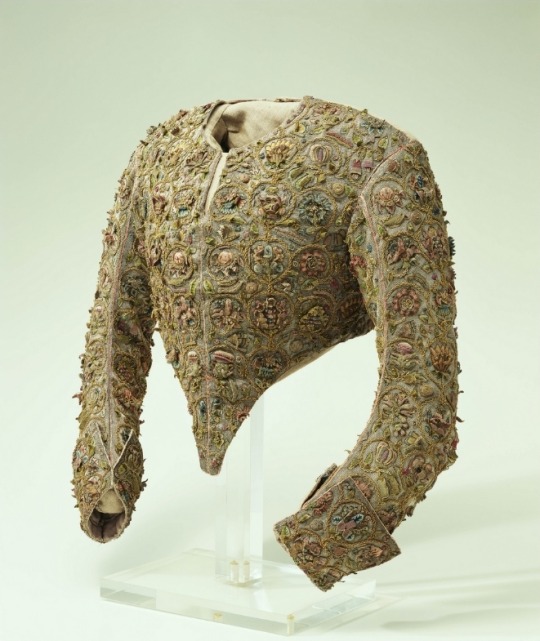
c. 1600
England
Plain-weave linen embroidered with metal and silk threads; naturalistic motifs; probably made as a gift for Elizabeth I of England.
Kyoto Museum
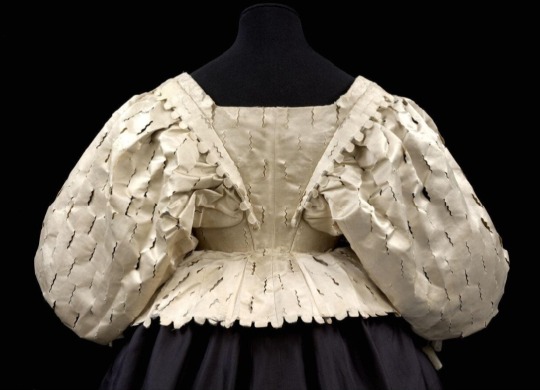
1630 -1639
Silk satin, silk taffeta, canvas, buckram and whalebone
England
V&A
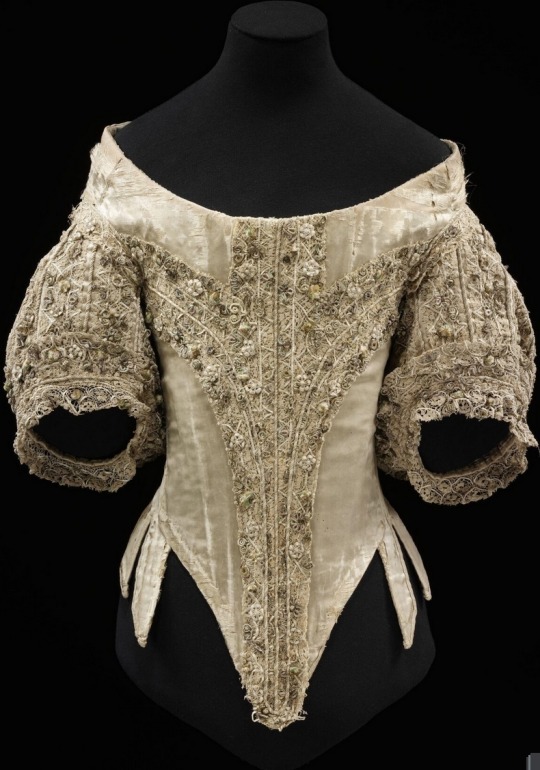
1660-1669
Silk, linen, whalebone, bobbin lace, parchment, linen thread, silk thread, metal strip
England
V&A
512 notes
·
View notes
Text

Watercolour Painting, ca. 1662, English.
By Nicholas Dixon.
Portraying Anne Hyde, Duchess of York in a Brown Dress.
Cleveland Art Museum.
#painting#watercolour#brown#womenswear#17th century#1660s#1662#1660s England#1660s Britain#England#English#British#Britain#Anne Hyde#Anne Hyde duchess of york#hair#1660s hair#watercolour painting#Nicholas Dixon#cleveland art museum
8 notes
·
View notes
Note
What's the story behind Denmark and the Netherlands?
Like, behind the ship? Or just in general?
Denmark and the Netherlands has a long history of friendship as well as many similarities between them. They have been trading partners since the Middle Ages, especially regarding cattle trade, that peaked in the 1600s and is this ongoing with Denmark exporting a calves to the Netherlands. Many Dutch refugees fled to Denmark during the Eighty Years War between 1568 and 1638, which further established links between them. They had a rough patch in the 1620s when Denmark upped the toll through Øresund because they were low on money. This cuased the Netherlands to join Sweden in war against Denmark in 1643. Still, after this, the Netherlands and Denmark-Norway remained allies and the Netherlands came to help when Sweden attacked Copenhagen in the 1660s. The Netherlands saved the city from capture. Likewise, Denmark-Norway helped the Netherlands in the war against England in 1665, which resulted in Dutch victory, as well as in the Thrid Anglo-Dutch War between 1672-1674. Further on, Denmark attacked southern Sweden as retaliation after Sweden had attacked the Netherlands in 1675. Sweden won the battles on land, but lost at sea.
Both Denmark and the Netherlands have similar terrain, extremely flat, and as such has both a love for biking and have infrastructure that facilitates this. Apparently the Danes and the Dutch are two of the few countries that celebrate copper wedding anniversaries (12,5 years) in the world, and they are both known for having similar mannerisms.
So, Denmark and the Netherlands have a long shared history of allegiance, trading, and cooperation between them, as well as cultural similarities and shared interests. Also, both their languages are incomprehensible garbage

#hetalia#aph denmark#aph netherlands#hws denmark#hws netherlands#historical hetalia#nedden#aph nedden#hws nedden#hope this helped shed some light on it!#it's not a ship I'm very invested in atm but I def see the appeal and reasoning behind!#if nothing else - they should at least be best friends#I believe they are often considered in relation to each other here#also; Denmark looks so short beside Netherlands but I swear it's just that Ned is super tall!!#tried to give Den more of that summer farm boy charm 🥰#been enjoying drawing him lately
89 notes
·
View notes
Text
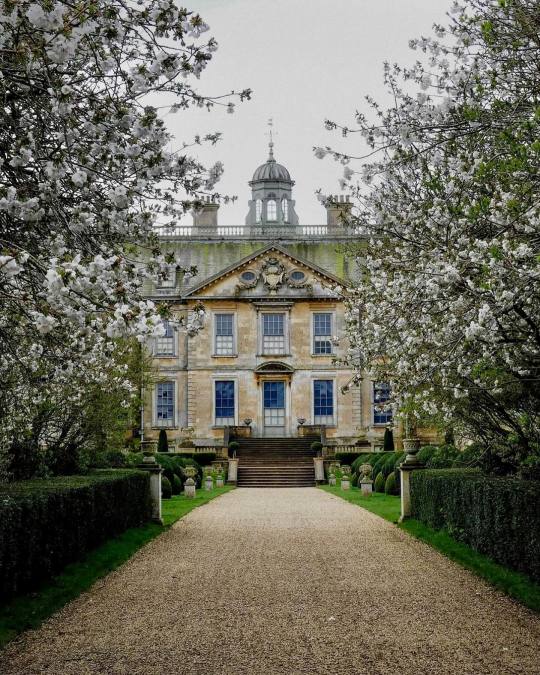

Spring splendor at an English country house…
Belton House, Grantham, Lincolnshire, England… a superb example of English Carolean, or Restoration, architecture popular from the restoration of the monarchy in 1660 under King Charles II to the late 1680s… The grade I listed estate, whose architect is unknown, is considered one of England’s best examples of a 17th-century country house, sitting on over 1,000 acres of countryside which include scenic gardens, an orangerie, follies, a lake with boathouse and more.
85 notes
·
View notes
Text
The First Rate - Ship of the Line
The concept of a classification system for British naval vessels dates back to the accession of James I of England, in the wake of which the fleet was officially divided into "large", "medium" and "smaller" ships. A 1618 Commission of Inquiry added the designation "Ships Royal" for the largest and most prestigious ships in the fleet, each capable of carrying at least 400 men.

HMS Britannia 120-guns (1820). Leaving a Mediterranean Harbour, by Robert Strickland Thomas (1787–1853)
The first Ships Royal - Elizabeth Jonas, Triumph, White Bear, Merhonour, Ark Royal and Victory - were all converted galleons, including three very old ships that had fought the Spanish Armada in 1588. Their condition was generally poor, with Elizabeth Jonas and Triumph already completely unserviceable and White Bear so unseaworthy that she was sold for scrapping in 1627.
Early first rates had only 60 guns, but by the mid-1660s they generally had between 90 and 100 guns. By the early years of the 18th century it had become accepted that 100 guns was the standard criterion for a First Rate in wartime (while 90 guns, later 98 guns, became the standard equipment for a Second Rate in wartime). (Towards the end of the century, ships were built with more than 100 guns, and they too were classified as First Rate.
Second rate ships with 84 to 98 guns and larger third rate ships with 70 to 80 guns. Smaller third-rank ships of about 60 to 64 guns and fourth-rank ships of about 50 guns were once considered suitable but were gradually phased out. The fifth and sixth class ships were frigates that could usually manoeuvre independently of the battle line.
The English first rate of the 1750s onwards was by far the finest and largest the Royal Navy could field. Because of their size, these 100-gun ships had 800-850 men on board to operate the guns and keep these big ladies running. And speaking of size, we arrive at an approximate length of 64m and a displacement of 2000 tons. They served as flagships in every squadron they sailed in and therefore usually had an admiral and his staff to carry. To build such a lady in 1760 cost around £67,000, which by today's standards is about £95 million.
This cost, however, included the supplies needed and the sheer quantity of them made them a rarity in the navies, which is why many did not have so many in service. In the 18th century, for example, the Royal Navy had only 5 in service, which later increased to 11. But they were designed for longevity, so they were often in service for more than 50-70 years and were often adapted and refitted. The famous HMS Victory was over 40 when she sailed into the Battle of Trafalgar and was rebuilt twice.
She is also the only one who has survived to this day. Others even built in the 19th century, some with around 120 guns, were scrapped after serving as floating navy academies or prisons.
191 notes
·
View notes
Text
A Crimson Peak Timeline
(based on the art book, documents shown onscreen in the movie, and the character bios GDT wrote- where the bios don't contradict film canon. I've attempted to combine the two where contradicting elements are unavoidable.
Sometime during the reign of Charles II (1660-1685). Edward Sharpe created Baronet for services to the crown in providing clay for construction projects. Allerdale Hall built in the parish of Above Derwent, Cumberland, England.
1841. Carter Everett Cushing born the second son of six in an impoverished family that traveled the eastern US for his father's masonry business.
1863. Beatrice Alexandra Chetwynde, eldest daughter of a large, wealthy family, marries Baronet James William Sharpe. The marriage is contracted solely for the Chetwyndes' land, which adjoins the Sharpe estate.
April 1, 1865. Lucille Sharpe born.
Sometime between 1865 and ~1873. Carter marries 18-year-old socialite Eleanor Wyndham-Beckford, to the immense disapproval of her family. Though she is disowned and the couple struggles to make ends meet for years, Carter ultimately becomes a successful developer.
February 18, 1867. Thomas Sharpe born.
C. 1867-1872. The Sharpes employ a wet nurse- and later nanny -named Theresa, who would become the only adult to care about the children in their lives. She would ultimately be sacked after Beatrice caught young Lucille snuggling with her for warmth on a winter's night (on the grounds that a noble child should not be close with servants- a "crime" for which Lucille was beaten severely).
1876. 11-year-old Lucille murders her father with poison distilled from mine tailings, after he took Thomas on a hunting trip and left him in the woods to die of exposure.
Late 1876? A mining vein near Allerdale Hall collapses, killing several child mine-workers. I could have sworn I read somewhere that James foolishly dug a mining tunnel under the house shortly before his death, and that's what destabilized it, but I can't find it now.
October 9, 1877. Edith M. Cushing born, after Eleanor had suffered several miscarriages.
1878. Thomas and Lucille begin a secret sexual relationship.
Early August, 1879. Beatrice catches Lucille and Thomas together; Lucille murders her to keep their secret. The siblings try to run away together but are caught and brought back. Thomas is sent to live with an aunt and uncle in Whitehaven (who in turn send him to boarding school), while Lucille is forced into a mental institution.
Probably summer, 1885. Thomas finishes his schooling and rescues Lucille; they return to Allerdale.
1887. The Sharpe siblings travel to London seeking investors for Thomas' venture to reopen the mines. A wealthy, terminally ill gentleman, Major Richard Upton, takes a liking to Thomas and begs Thomas to marry his disabled daughter, Pamela. At Lucille's urging- since they're running out of both options and money -Thomas agrees. The two attempt to poison Pamela to death, but Lucille ends up strangling her instead.
Sometime between October 1887 and October 1888. Eleanor Cushing dies of cholera and appears to Edith as a ghost.
Early-mid 1890s. Carter and the recently widowed Mrs. McMichael have a brief flirtation that both Edith and Eunice oppose. Though it goes nowhere, the rift between the two girls is never healed.
Late October or November 1892. Edith (age 15) becomes infatuated with a 25-year-old poet who is having marital difficulties. After convincing Carter to hire him as a tutor, all unknowing, she confesses her feelings to him. He not only takes his leave of the Cushing family, but of Buffalo itself, quickly moving away with his wife and children.
1893. The Sharpes travel to Edinbrugh, where Thomas again finds no investors but does attract the attention of a 36-year-old widow of means, Margaret McDermott. Once again, he marries her and helps Lucille poison her, though she is ultimately killed via blunt force trauma.
Summer 1893. Edith asks her best friend, Alan McMichael, to kiss her so she can write about kisses more accurately. It means nothing to her, but sparks an unrequited passion in Alan
1896. Lucille falls pregnant by Thomas. He travels with her to Italy, which he loves and she despises. There he meets a wealthy woman named Enola Sciotti, widowed and bereaved of her only child, and decides of his own accord to marry and murder her in their usual fashion. The Sharpes and Enola return to Allerdale.
1897. Lucille is delivered of a son, who may or may not be sickly. Enola tries to care for her and the child, promising she can save him. The baby either dies of natural causes or Lucille smothers him under the conviction that his cries mean something is terribly wrong with him and he can't live- this is one contradiction in the bios vs. the movie that I prefer to leave vague, since it's possible not even Lucille remembers what happened. Either way, she blames Enola and dispatches her by unknown means. Thomas patents his excavating machine.
Late summer(?) 1901. Alan returns from studying medicine in London and sets up an ophthalmology practice in Buffalo. Edith's debut novel, Figures In The Mist, is rejected for publication by Oglivie and Sons. Thomas seeks investment in the mines from Cushing and Co., unsuccessfully. Edith and the Sharpes begin a friendship. Edith sees her mother's ghost for the second time.
September 14, 1901. President William McKinley dies after being shot at the Pan-American Exposition in Buffalo. I include this because the fact that the movie doesn't is hilarious to me.
October 21, 1901. At the Cushings' dinner party, Carter bribes the Sharpes to leave, instructing Thomas to break Edith's heart or he'll tell her about the marriage to Pamela. A deleted scene reveals that he was on the verge of relenting and investing in the mines when he read the private investigator's report.
October 22, 1901. Lucille murders Carter at his club, then departs to return to England. Thomas and Edith become engaged.
Late October-early November 1901. Thomas and Edith are married and travel to Allerdale.
November-December 1901 (possibly into early 1902?). The rest of the movie's plot.
59 notes
·
View notes
Photo

Europe in the 17th century
🇱🇹 "Viduramžiai: atlasas, konspektas, žodynas", Briedis, 2010
via cartesdhistoire
In 1648, a concert of nations was established. The starting point is the separate treaty concluded on January 30 between the United Provinces and Spain: there we see the idea of balance appearing, no longer against the defeated Habsburgs but against a France which would be too preponderant; hence the failure of the project cherished by Mazarin of an exchange between Catalonia and the Netherlands.
The theory of balance triumphed at the Treaties of Westphalia and a new Europe appeared, within which large states developed on the basis of reciprocal independence: the notion of empire as the ecumenical power of Christianity thus disappeared. definitely. However, France's centuries-old conflict against the Habsburgs has had such a profound impact on diplomatic traditions that it is impossible for France to think about international politics outside of this very conflict. Louis XIV thus ignored the importance of maritime and commercial aspects, leaving France to fall behind England. Indeed, if the Franco-Spanish War which ended in 1659 was a land war, it was coupled with a maritime war during which England sided with France with the aim of seizing Dunkirk. Furthermore, with his eyes fixed on France's traditional alliances in Eastern Europe, Louis XIV did not worry about the development of Russian power after 1660, following the Northern War.
The consequence is that France's forces are then wasted in obsolete enterprises of useless struggles which only bring together ever-reviving coalitions against it - including the Grand Alliance of 1689. In 1715, France certainly found itself equipped with a border better than in 1648, but territorially equal to itself, in a Europe where other States have significantly progressed. While in 1648 it had undeniable pre-eminence, at the death of Louis XIV it was no more than one of the elements of the European balance.
69 notes
·
View notes